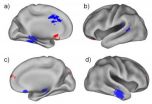(Press-News.org) The World Health Organization set a target for the influenza vaccination rate for 2006 of more than 50% of the elderly population and an increase to more than 75% by 2010. These rates have thus far not been achieved in the old German states. In the current issue of Deutsches Ärzteblatt International (Dtsch Arztebl Int 2010; 107[48]: 845) the working group around Annicka M. Reuss presents rates from flu seasons past.
Germany's Standing Vaccination Committee (STIKO) recommends annual vaccinations against seasonal influenza. The risk groups for the infection, which usually peaks in January and February, include those older than 60 years of age. Compared with other European countries, Germany has the lowest vaccination rate for these persons. All vaccinations reimbursed by the statutory health insurers are captured by the associations of health insurance physicians (KV) and passed on to the Robert Koch Institute as part of the KV sentinel project. Reuss et al. extracted from this data pool the influenza vaccination rates from areas covered by 14 associations of statutory health insurance physicians for the influenza seasons 2004/05, 2005/06, and 2006/07. Their analysis showed that vaccination rates for seasonal influenza in these years were 45-50% and therefore did not meet the criteria set out by the World Health Organization. The situation in individual German states was heterogeneous; the east German states had better results.
INFORMATION:
http://www.aerzteblatt.de/v4/archiv/pdf.asp?id=79461
Flu on the western front
2010-12-17
ELSE PRESS RELEASES FROM THIS DATE:
New study suggests almonds may help reduce risk of type 2 diabetes and heart disease
2010-12-17
Modesto, CA (Dec. 16, 2010) – With nearly 16 million Americans living today with prediabetes, a condition that is the precursor to type 2 diabetes, and half of all Americans expected to have either prediabetes or type 2 diabetes by the year 2020, nutritional approaches to maintaining healthy blood sugar levels are essential.1,2 The findings of a scientific study examining the health promotion and disease prevention benefits of almond consumption were published in the June, 2010 Journal of the American College of Nutrition. The study, one of the first of its kind to quantify ...
Decades after childhood radiation, thyroid cancer a concern
2010-12-17
When children are exposed to head and neck radiation, whether due to cancer treatment or multiple diagnostic CT scans, the result is an increased risk of thyroid cancer for the next 58 years or longer, according to University of Rochester Medical Center research.
The study is believed to be the longest of any group of children exposed to medical irradiation and followed for thyroid cancer incidence. It was published in the December 2010 edition of the journal, Radiation Research.
The data also might provide some insight about why the rates of thyroid cancer continue ...
Wind turbines may benefit crops
2010-12-17
AMES, Iowa – Wind turbines in Midwestern farm fields may be doing more than churning out electricity. The giant turbine blades that generate renewable energy might also help corn and soybean crops stay cooler and dryer, help them fend off fungal infestations and improve their ability to extract growth-enhancing carbon dioxide [CO2] from the air and soil.
Speaking at the annual meeting of the American Geophysical Union, a scientific society, in San Francisco today, a researcher at the U.S. Department of Energy's Ames Laboratory and his co-researcher from the University ...
Teacher effort is linked to difficult students' inherited traits
2010-12-17
Challenging students take up more of their teachers' time—and the difference between a tougher student and an easier one appears to be genetic, according to a new study published in Psychological Science, a journal of the Association for Psychological Science. The study looked at young twins in the U.K. and asked their teachers how much of a handful they are.
"Policy-wise, there's a lot going on, blaming teachers for what's going on in the classrooms," says Renate Houts of Duke University, who cowrote the study with Avshalom Caspi and Terrie E. Moffitt of Duke, Robert ...
MRI scans reveal brain changes in people at genetic risk for Alzheimer's
2010-12-17
AUDIO:
People with a known risk for Alzheimer’s disease seem to develop abnormal brain function even before the appearance of amyloid plaques in the brain. A new study from Washington University...
Click here for more information.
People with a known, high risk for Alzheimer's disease develop abnormal brain function even before the appearance of telltale amyloid plaques that are characteristic of the disease, according to a new study.
Researchers at Washington University ...
New report outlines restoration activities to speed seagrass recovery in the Florida Keys
2010-12-17
Results of a five-year monitoring effort to repair seagrass damaged in a boat grounding incident suggest that restoration techniques such as replanting seagrass can speed recovery time. The finding is included in a new report released today by NOAA's Office of National Marine Sanctuaries.
The National Marine Sanctuaries Conservation Series report, "N-Control Seagrass Restoration Monitoring Report Monitoring Events 2003-2008," presents results of efforts to repair a nearly 1,000-square-foot (92.8-square-meter) swath of seagrass that was damaged on May 29, 2001, when a ...
Tiny 3-D images shed light on origin of Earth's core
2010-12-17
To answer the big questions, it often helps to look at the smallest details. That is the approach Stanford mineral physicist Wendy Mao is taking to understanding a major event in Earth's inner history. Using a new technique to scrutinize how minute amounts of iron and silicate minerals interact at ultra-high pressures and temperatures, she is gaining insight into the biggest transformation Earth has ever undergone – the separation of its rocky mantle from its iron-rich core approximately 4.5 billion years ago.
The technique, called high-pressure nanoscale X-ray computed ...
Extinctions, loss of habitat harm evolutionary diversity
2010-12-17
A mathematically driven evolutionary snapshot of woody plants in four similar climates around the world has given scientists a fresh perspective on genetic diversity and threats posed by both extinctions and loss of habitat.
The message from the study, appearing online ahead of publication in Ecology Letters, says lead author Hélène Morlon, is that evolutionary diversity -- the millions of years of evolutionary innovations contained in present-day species -- is more sensitive to extinctions or loss of habitat than long thought. And that, she adds, means conservation efforts ...
Emotional intelligence peaks as we enter our 60s, research suggests
2010-12-17
Older people have a hard time keeping a lid on their feelings, especially when viewing heartbreaking or disgusting scenes in movies and reality shows, psychologists have found. But they're better than their younger counterparts at seeing the positive side of a stressful situation and empathizing with the less fortunate, according to research from the University of California, Berkeley.
A team of researchers led by UC Berkeley psychologist Robert Levenson is tracking how our emotional strategies and responses change as we age. Their findings – published over the past ...
First measurement of magnetic field in Earth's core
2010-12-17
A University of California, Berkeley, geophysicist has made the first-ever measurement of the strength of the magnetic field inside Earth's core, 1,800 miles underground.
The magnetic field strength is 25 Gauss, or 50 times stronger than the magnetic field at the surface that makes compass needles align north-south. Though this number is in the middle of the range geophysicists predict, it puts constraints on the identity of the heat sources in the core that keep the internal dynamo running to maintain this magnetic field.
"This is the first really good number we've ...

